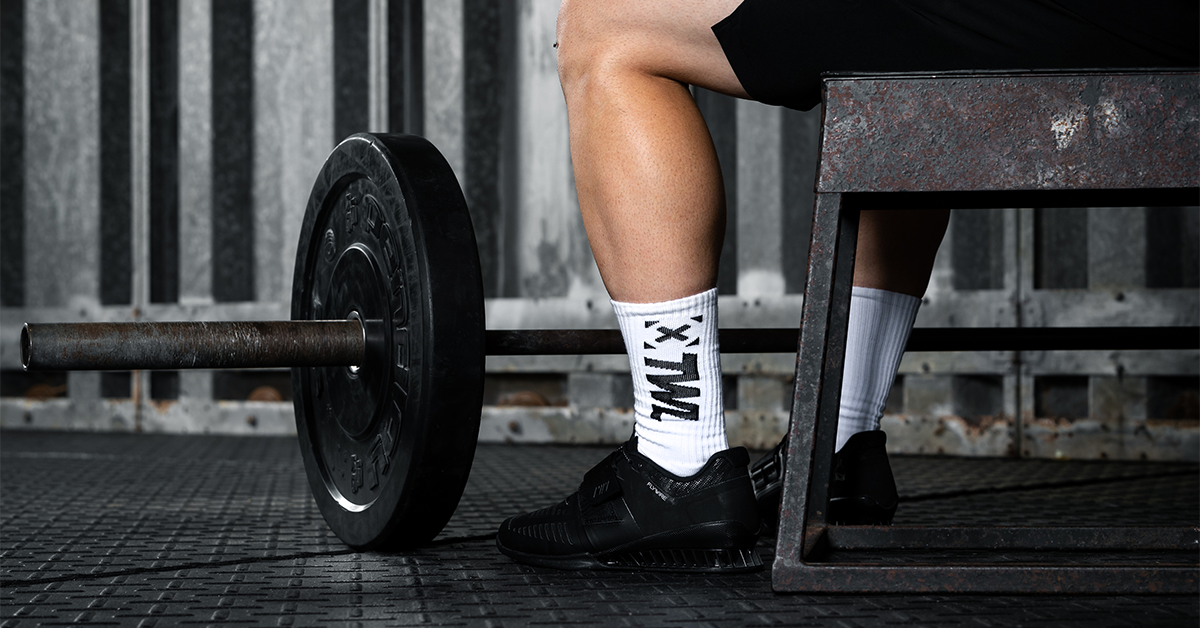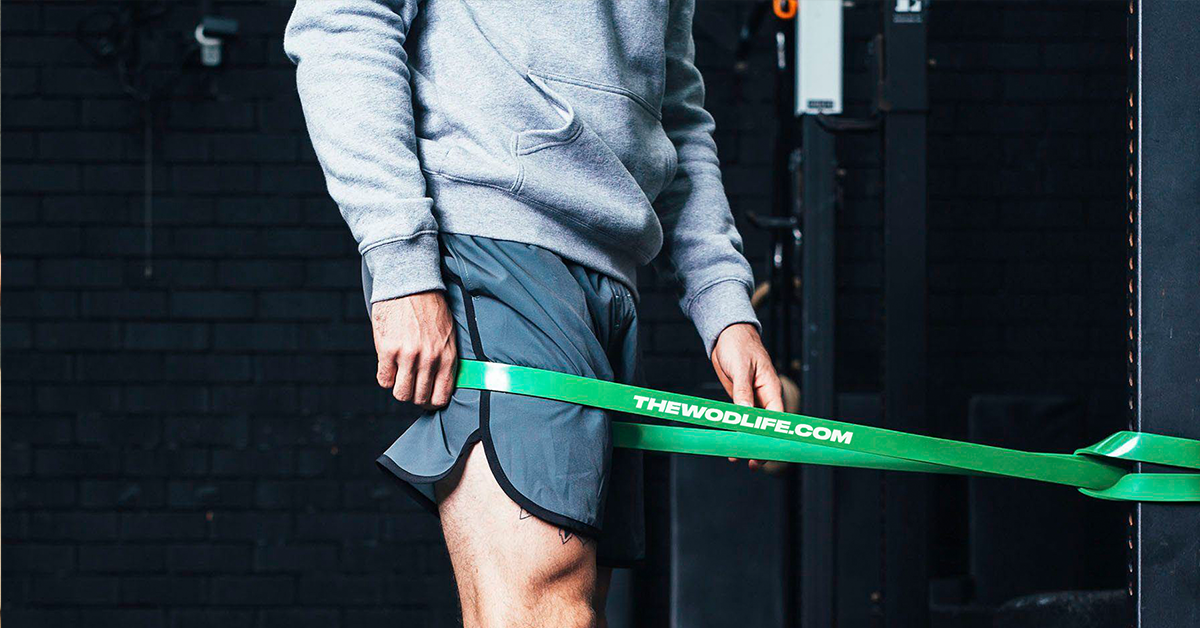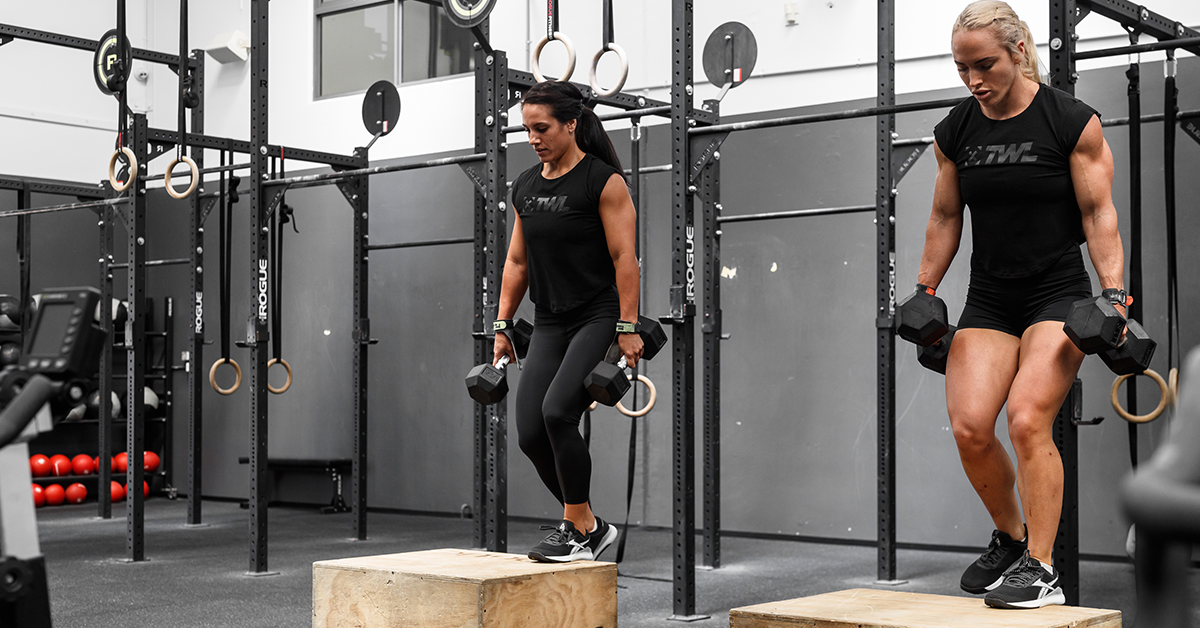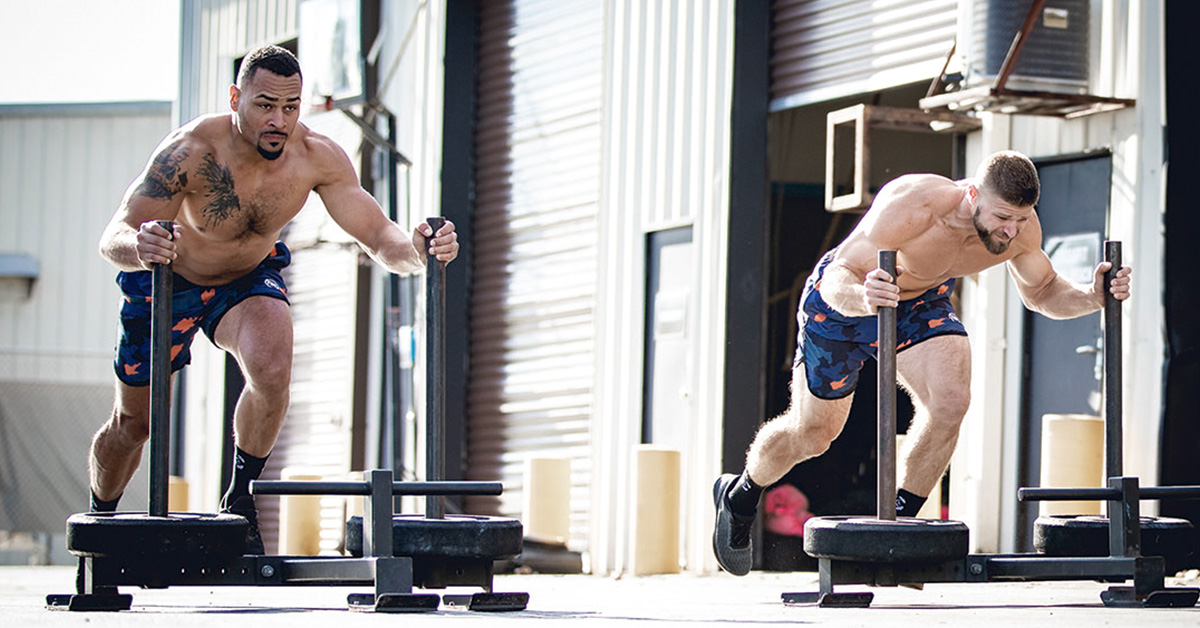The posterior chain is an underrated group of muscles that powers so many important movements. However, too many athletes aren’t even paying attention to it. In this blog, we’re going to talk about what the posterior chain is, why it’s so important, and how you can make it stronger.
Let’s dive in!
What is the Posterior Chain?
“Posterior chain” is an umbrella term for the muscles that comprise the backside of the body, including the:
- Erector spinae.
- Latissimus dorsi.
- Glutes.
- Hamstrings.
- Calves.
The primary posterior chain muscles are considered “linked” because these muscles work in tandem to drive movements.
The posterior chain anatomy is typically undertrained because they’re at the back of the body. As the saying goes, “Out of sight, out of mind.” Unlike your abs, biceps, and pecs, which are visible and add to that dream beach bod, the posterior chain is typically unseen and deprioritized in training.
However, as you’re about to learn, a weak posterior chain can spell big trouble.
Why is the Posterior Chain Important?
It’s important to train and strengthen the posterior chain for a number of reasons:
- These muscles drive mobility and support for so many exercises and daily activities, such as running, jumping, pushing and pulling, sitting, and standing.
- A strong posterior chain helps the body generate explosiveness, so it enhances athleticism and reduces the likelihood of injury.
- Furthermore, research has found that a strong posterior chain helps you maintain proper posture and alignment and also counteracts unexpected forces on your muscles.
Essentially, if you want to see significant gains in the gym — and stay safe and healthy on your way there — doing your posterior chain workouts regularly is going to be mandatory.
Let’s get to those next.
5 Posterior Chain Strengthening Exercises
Now that you know what the posterior chain is and why it’s so important, let’s talk about how you can make a weak posterior chain stronger.
1. Romanian Deadlift
This exercise works out many of the same muscles as a traditional deadlift, which is the usual go-to for posterior strengthening. But the Romanian deadlift is much more user-friendly because it can be performed with lighter weights and starts at the top with the hips locked out. This reduces the likelihood of rounding the lower back, even if you have hip mobility restrictions.
Start by standing with your feet at a hip-width distance and your knees bent slightly. Hold the barbell at thigh level with your hands slightly wider than your shoulders and your palms facing your body. While staying mindful of maintaining a straight and engaged back, lower the bar by bending at your hips. Bring it down until mid-shin or as far as your flexibility will let you. Then, drive back up to the starting posture by forcefully extending your hips.
2. Glute Ham Raise (GHR)
This is a popular posterior chain strengthening exercise, particularly for more advanced lifters. It helps to strengthen the hamstrings through simultaneous hip extension and knee flexion and does wonders for your glutes, calves, and lower back.
Start by adjusting the GHD machine to your preference. Put your feet between the rollers and against the footplate with your knees just behind the pads. Get into starting position facedown such that your torso is parallel with the floor with legs bent slightly.
Then, work your back and leg muscles to pull yourself upward – arch your back and flex your knees as you push your toes into the footplate. Stay mindful about keeping your upper body straight until you’re upright. Then make a controlled descent back to the starting position.
3. Cable Pull-Through
This is a great exercise for working out your glutes and hamstrings and can function as a warm-up before doing squats, deadlifts, and other intensive lower-body strengthening exercises. Having the cable run between your legs and behind you creates a unique pull because it’s going backward instead of the usual forward pull.
Begin by standing with your back towards the cable column with a rope handle connected to the pulley, so you’re facing away from it. Next, straddle the cable and hold the rope above your thighs such that the cord will pass between your legs and run behind you. Lift the weight off the stack slightly by stepping forward with your feet at shoulder-width distance.
Then, lower your torso gradually by pushing your hips back while maintaining a flat back and slightly bent knees. Keep going until you’re happy with the stretch in your hamstrings, then gradually return to the standing position. This can be done in sets of 2-3 with 12-15 reps each using moderate weights.
4. Medicine Ball Throw
We’re going to take wall balls and make them slightly more explosive.
This movement helps you generate explosive power with the whole posterior chain and major joints in the body working together as a unit. Because it’s about developing power, this exercise is not for muscle-building or conditioning. You can do this in the warm-up portion of your strengthening programming to prime the body for deadlifts, lunges, and loaded squats.
Shop Now
It’s best to do this in an open area with lots of space and minimal people. Start by choosing a medicine ball of your choice, ideally between 10 and 20 pounds. Standing with feet at a shoulder-width distance, handle the ball from the bottom and hold it out in front of you. Then, with your head, spine, and pelvis in alignment, quickly push your hips back to drop into a half squat. Drive out of the squat explosively by propelling yourself using your hips and knees. As you do this, throw the medicine ball as powerfully upward as you can such that your feet will lift off the floor by a few inches. Land on soft knees and, taking care that it doesn’t hit you, let the ball fall on the floor before picking up and doing another rep. Do 2 to 3 sets with 5 to 8 reps each.
5. Kettlebell Swings
View this post on Instagram
This exercise is a frequent fixture in CrossFit. It’s great for working out the hamstrings and glutes, but also needs explosive strength and coordination in the shoulders, torso, and core.
First, pick out the kettlebell that suits your strength level. Beginners typically do light kettlebells ranging from 10 to 15kg, while advanced lifters can do 24kg and up. Once you have your kettlebell, put it on the floor just in front of you. Pull your shoulder blades back and down, keep your ribs down, and level your tailbone with the floor as your brace your abs.
Then, lower your torso by bending your hips back so that you can hold the kettlebell with both hands in an overhand clasp. Keep your head, spine, and pelvis aligned while keeping your shoulder blades pressed downward as your shift weight to your heels. Then, slightly bend your knees as you lift the kettlebell and swing it between your legs.
Once your wrists reach your inner tights, contract your glutes and hamstrings and move your hips forward until you’re in a standing position. The momentum will carry the kettlebell up to your eye level. When it comes back down, let it swing back between your legs and repeat. These are Russian kettlebell swings.
Spending a little extra time strengthening your posterior strength will help you lift more, train harder, and avoid injury!

















